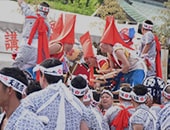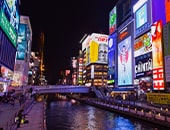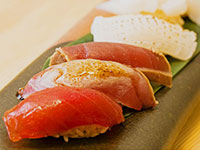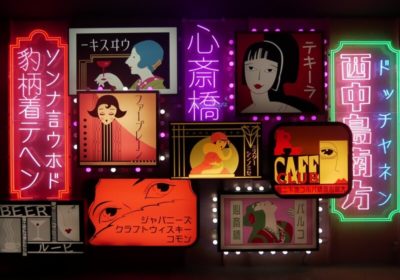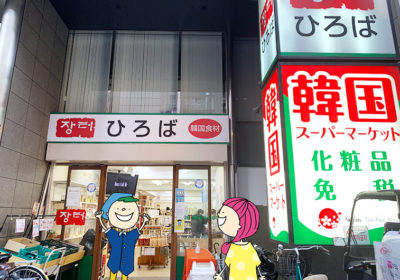

Supporter
Immerse Yourself in Temple Life—Stay Overnight in a Buddhist Temple near Osaka
Have you ever wanted to stay in a Buddhist temple overnight? This practice is called shukubo in Japanese and it’s a great way to experience the unique and serene environment of a Buddhist temple. The accommodations will make you feel completely immersed in a traditional Japanese way of life; Rooms are often covered in tatami mats and futon beddings are the default. The calming atmosphere of a quiet temple at night is like none other.
(Contents)
Where to Book a Temple Lodging if You’re in Osaka
Most great trips to Japan start in Osaka, of course. So where do you go from there? Guidebooks and tourist sites will send you deep into Wakayama Prefecture to stay at one of the temples in Kōyasan (Mount Kōya), which also happens to be the center of Shingon Buddhism.
And while I do love the charms of Kōyasan, Shigisan (Mount Shigi), on the other hand, which is located in Nara Prefecture, is much closer to Osaka. It takes close to 2.5 hours to get to Kōyasan from central Osaka on public transportation, whereas the trip to Shigisan is only a little over 1 hour.

Shigisan is also considerably less crowded and generally cheaper than Kōyasan. Of course, crowds and pricing depends on many factors including the time of year or how early you book your lodging. But from my experience, these generalizations about better pricing and fewer crowds have proven to be true. Shigisan is still very much a hidden gem type of destination.

Located on the border of Osaka and Nara Prefectures, Mount Shigi is home to a large temple complex known as Chogosonshi-ji. The main temple building looks out over the vast Nara plains. The temple has a deep relationship with tigers so you will notice them big and small, all over the temple grounds. Some appear round and cute, some more vicious, some of the tiger statues are so ferocious-looking that they are enclosed in cages to keep lookers-on safe. How cute!
Mount Shigi is well worth a visit, even if you don’t stay the night. Read more about the background of the temple and the fun things to do at Chogosonshi-ji here:
https://maido-bob.osaka/en/2023/02/07/shigisan-temple-in-nara/

The Tranquil Charms of This Buddhist Temple at Night
The temple grounds are picturesque in daytime, of course. But they take on an entirely different atmosphere at night. Having visited hundreds of temples, I’d have to say, the majority of my
temple visits have been during daytime hours. Being here after sunset feels incredibly special, and quieter in the dark…

Everything looks more mysterious under the cover of night and the grounds are lit by the soft glow of rows of beautiful old stone lanterns, each engraved with the name of the person or entity who dedicated it. The night air was cool and calm and a slight breeze blew through the surrounding mountain forest.

As you follow the stone paths, you’ll wind around the mountain and can visit the various temple buildings, along the way, each illuminated against the backdrop of the night forest. Shadows cast by the surrounding trees dot the path for this altogether enchanting night walk.


Proceed up the mountain, towards the site of Mt. Shige’s former castle, and you will come to tunnels of torii gates painted in the traditional black and bold vermillion. The climb is well paved, but there are a lot of stairs and steep slopes. So prepare yourself for a decent workout if you decide to go up. The quiet night stillness and the bright torii gates create a beautiful scene and with each torii gate I passed through, I felt compelled to go on.

The night walk was incredible and a unique chance to experience palpable tranquility, quiet solitude, and the serene natural environment of temple grounds in the evening. I wouldn’t have been able to relax and enjoy Shigisan this leisurely, had I not stayed overnight.
Staying at Shigisan—Three Temples Where You Can Book Shukubo Lodging
Traditionally, shukubo lodgings were for monks in training and temple-followers, but some facilities are open to non-Buddhist visitors as well. On Mt. Shigi, there are three temple lodgings where you can stay: Gyokuzo-in, Jyofuku-in, or Senjyu-in. All three offer slightly different features, but each has shukubo rooms which are open to the public.
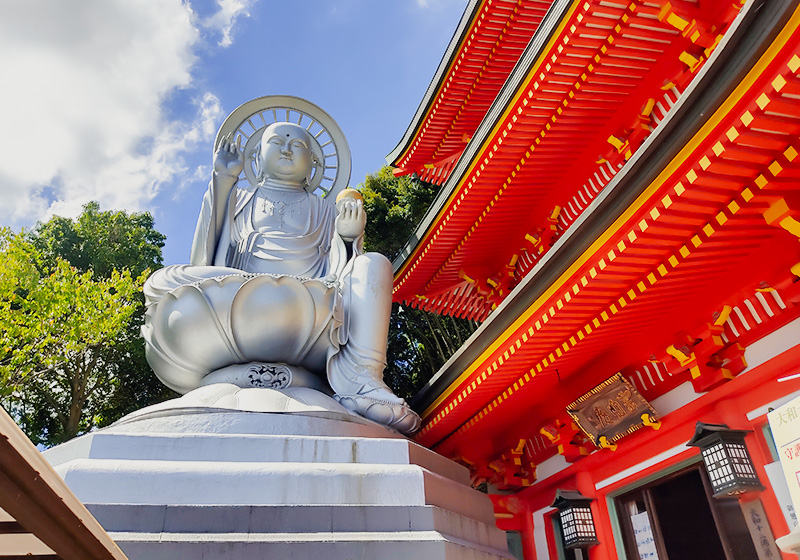
Gyokuzo-in is the higher ranking of the three and their English support seems to be the best. Guests can take part in a Goma Ritual (fire prayer ritual) and the Daihannya Prayer ritual in the Main Hall. They also offer meditation workshops, sutra tracing, and other experiences that you can book at the time of your reservation.
Also, the lodgings are near this giant Buddha statue, which let’s face it, is just so cool!

Jyofuku-in is altogether elegant and venerates both Bishamonten (one of the seven lucky gods) and Yuzu-sama, who is said to bring flexibility, adaptability, and good luck in financial matters. This is a popular temple for business-people. The main temple building boasts beautiful views of Shigisan’s greenery, including a five hundred year old gingko tree.

Personally, I chose to stay at Senju-in because it has a beautiful garden. The corridors in the older lodgings were designed using traditional Japanese woodwork and the glass panels allowed full view of the garden and koi pond. It felt like I was walking through the garden, as I was heading to my room. I could see fish swimming near the surface of the water and dragonflies swooping among reeds.

The room also had a clear glass panel inside the shoji doors, so I could fully admire
the garden from inside my room, while sipping on hot green tea.

Goma Fire Ritual and Meditation
When I chose Senjyu-in, I confirmed that I would be able to participate in the fire ritual (goma). I had never participated in one before, but had seen them at temples before, and was intrigued. The temple office was very kind and patient, showing me how to write my prayers on the wooden tablet that would be burned in the next day in the ritual fire. The goma fire is said to carry the prayers to the deities while burning away attachments and desires, which according to Buddhist teachings are the cause of human suffering.

I woke early to be at the temple altar by 6:15 am, wooden prayer stick in hand. The head priest, seated in front of the fire alter, began chanting and reading each prayer aloud before feeding the wooden sticks into the flames. Black smoke rose to the ceiling, where soot coated gold, yet somehow felt cleansing. And the sound of taiko drums and harmonizing Buddhist sutras inspired a sense of solemnity and transcendences. I was very happy to have the chance to take part in a fire ritual.
Chogosonshi-ji is generally open to the public. If you are quiet and respectful, you may meditate inside the Main Hall, which is especially charming when the monks chant their morning sutras. The soothing rythmic repetition of sacred syllables fill the air, transporting you deep into the calmest reaches of your mind and their voices carry far, seeming to resonate out from the top of the mountain to the towns below. I recommend waking up early to catch the morning sutras to start your day fresh with mental clarity.
alt=“Main Hall and meditation area at Chosonshi-ji Temple at Shigisan in Nara”
Buddhist Lodging Accommodations and Meals
Keep in mind that shukubo do not offer the same luxury as hotels or ryokan. Rooms are generally furnished in tatami mats and guests sleep on futons. When I stayed, everything I needed was there, a futon, a comforter, a pillow, and sheets. Even a minifridge! But because this is a temple, austerity is a given. I pulled out my own futon and made my own bed.

Guests had private rooms and access to shared bathing facilities. Like many Japanese lodgings, bath times are predetermined and separate for men and women. There is a shower room and a large bath. It was nothing fancy, again this is not a hotel.
Despite the basic lodging, the meals were beyond impressive! Dinner was a traditional multi-course kaiseki meal. Each plate was carefully and artfully presented on colorful plates. Flavors were subtle and fresh. The temple can also offers shojinryori (traditional Buddhist cuisine) meals for groups of 10 or more and they are open to requests for vegetarian or vegan meals.

The lodging price also included a hearty breakfast, which was delicious and equally as terrific. At this point, the value of the meals, room, and overall experience was well beyond the price point. I cannot emphasize enough how special it felt to stay here.

How to Get to Shigisan
Perhaps the only reason Shigisan is not flooded with tourists is because there is no train station nearby. But this doesn’t mean you can’t get there on public transportation. There are two relatively easy ways to get to Shigisan from Osaka. Both options require you to take a bus. The buses generally run on schedule and are easy to use.

Transportation to Mt. Shigi
Option 1:
Take the JR to Oji Station. The Yamatoji Line will take you straight there and it’s only about a 20-minute ride from Tennoji. From there you will take a bus to Shigi-Ohashi. Times can be found on here.
Option 2:
Take the Kintetsu train to Shigisanshita Station. From here you can take a bus to Shigi-Ohashi.
Option 2 may be easier because the station is small and it is very easy to find the bus stop. Option 1 may be more convenient, depending on where you are traveling from. Either way, it’s not as hard as you may imagine. Because buses run infrequently, so please be sure to check the schedule ahead of time (map applications are very useful!) and plan accordingly.
Alternatively, you could rent a car or taxi from a nearby station. Either way it’s worth the trip! Have fun and enjoy your overnight stay at this amazing Buddhist temple.

Supporter
The contents of this page were current at the time it was posted, but may differ from the present.
Text visible in this map is based on information from Map Tiler and may differ from actual geographical names.







